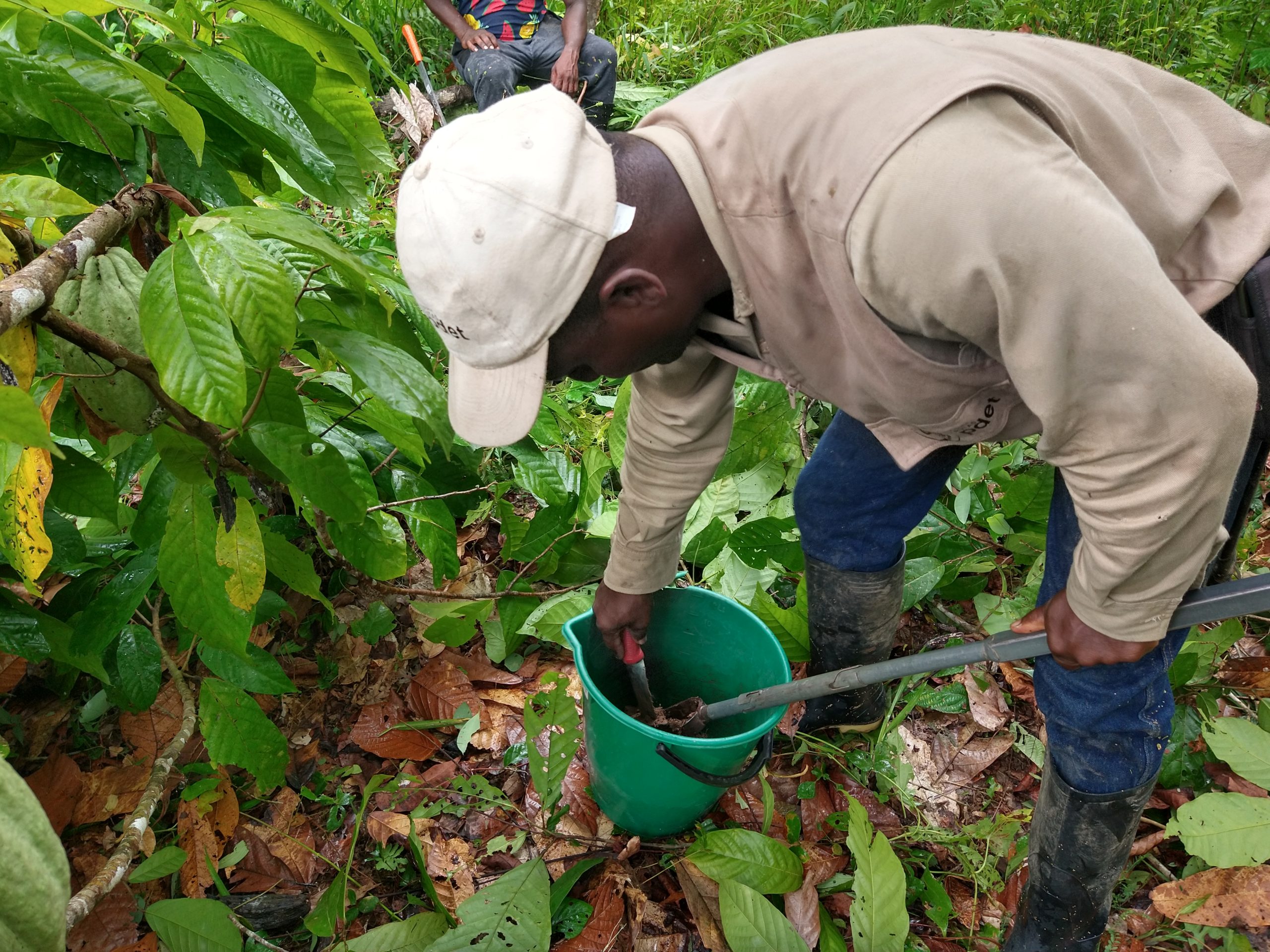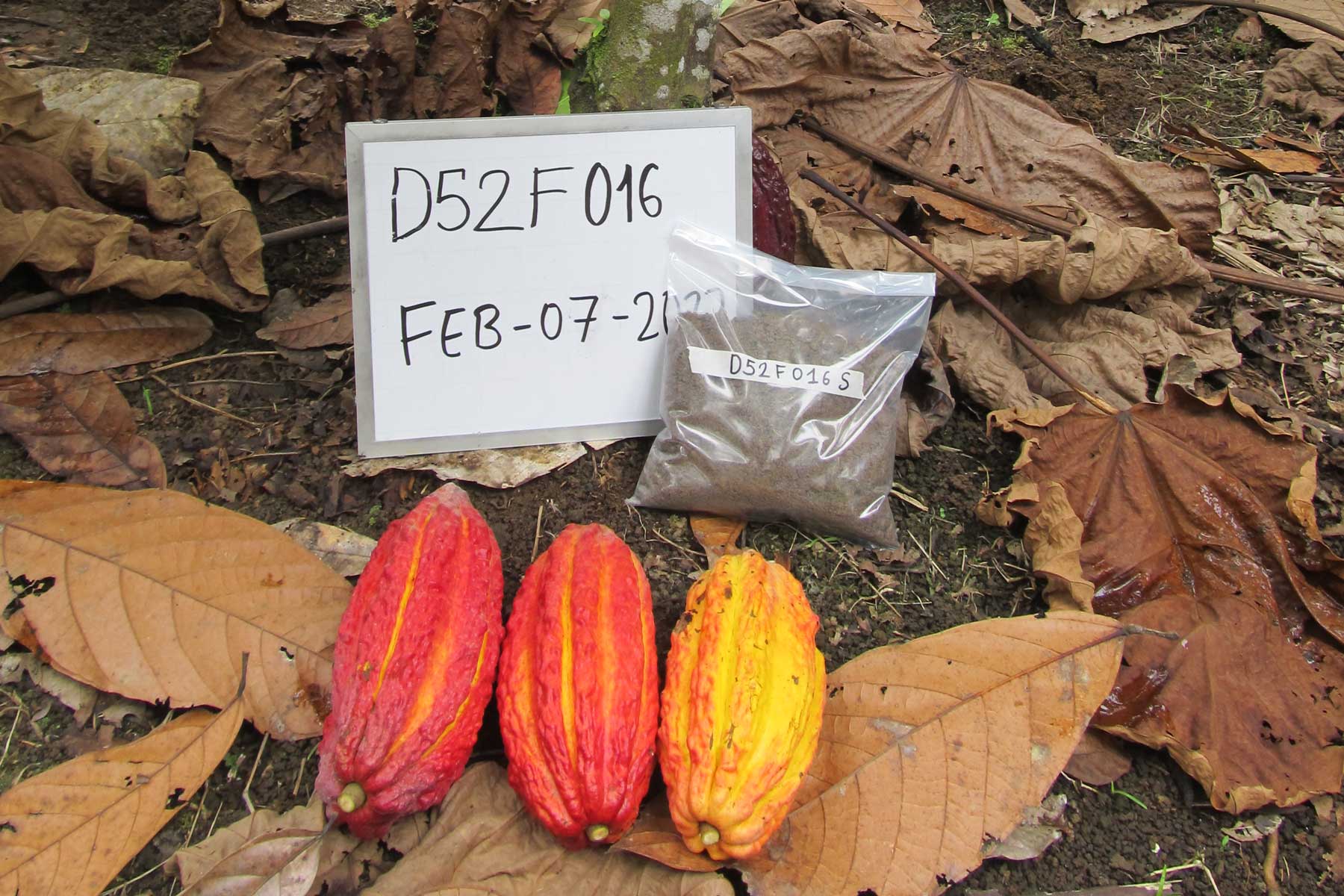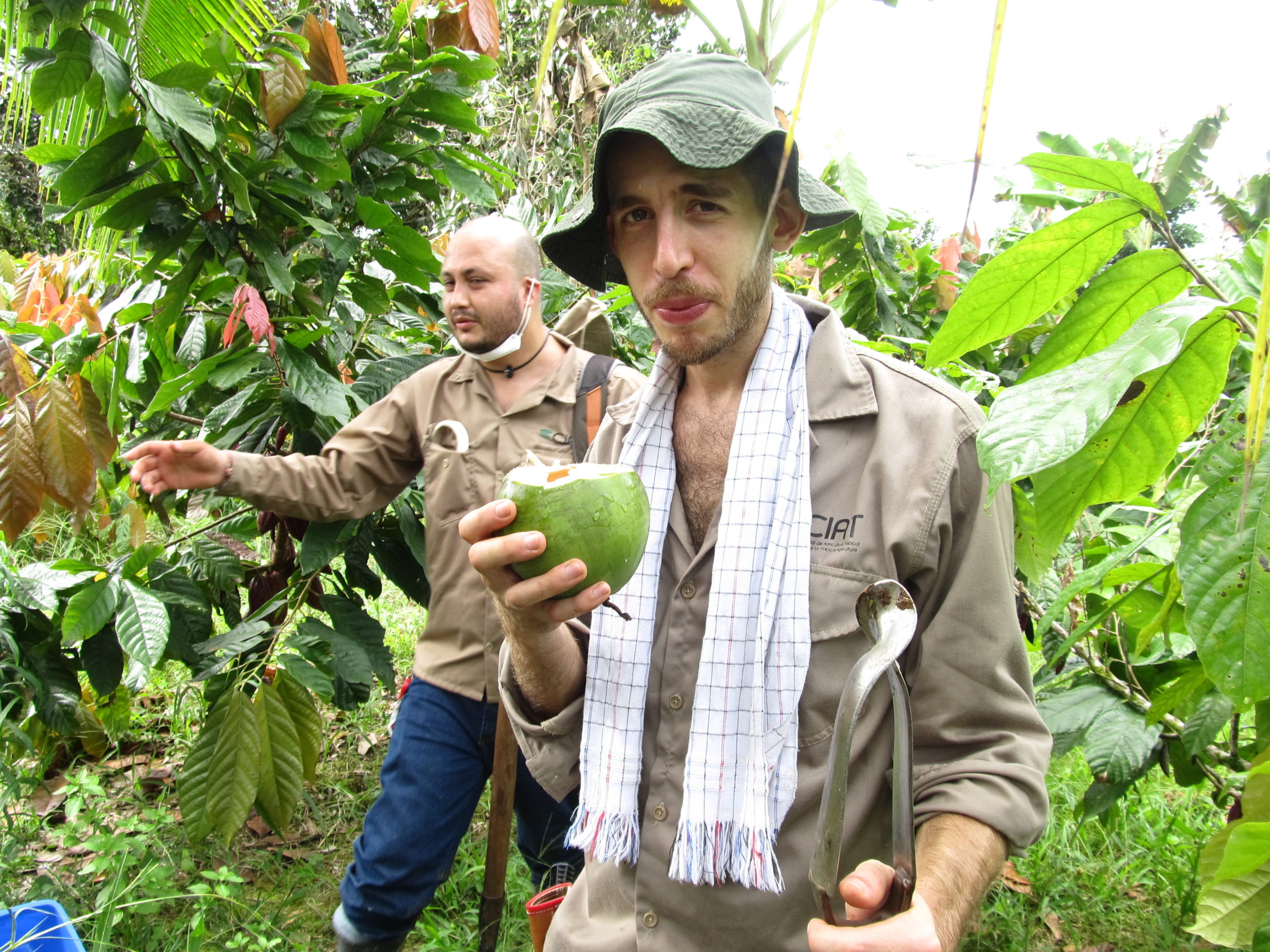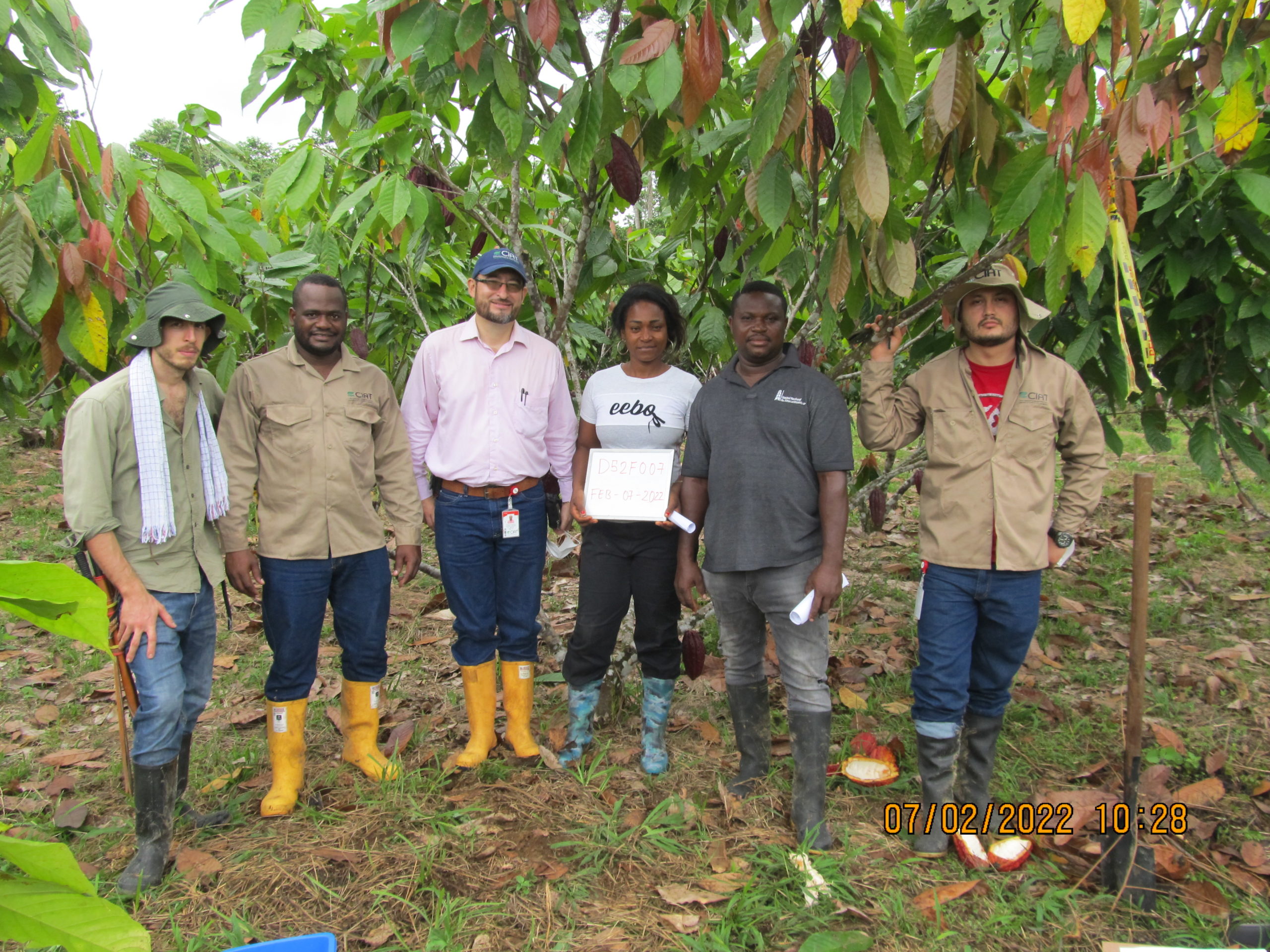Researchers and technicians of the Clima-Loca project tell us about their experiences when they travel to the field to carry out soil, leaf and cocoa bean sampling, in one of the most important activities of the initiative, soil and cadmium mapping. An encounter with nature and an exchange of knowledge with cocoa families in Colombia are some of what they experience.
The Clima-LoCa project aims to promote innovations focused on mitigating the impacts related to climate change and the European cadmium safety standards, to improve the resilience and inclusiveness of the cocoa supply chain in Colombia, Ecuador and Peru.
To develop recommendations and mitigation strategies oriented to public policies and planning, it is necessary to understand the distribution of cadmium in the cocoa growing regions. For this reason, one of the activities of the Clima-LoCa project is focused on the characterization of soils and cocoa beans using methodologies such as digital soil mapping, to better understand the spatial variation of cadmium levels and soil characteristics such as acidity, organic matter content, among others, that affect its availability to the plant.
In this process, one of the most important stages is the collection of samples, which, when properly carried out, allows obtaining reliable and quality information. In addition to the scientific process, each of the researchers and technicians involved gather valuable experiences that enrich this activity and, therefore, the project.
Members of the sampling team in Colombia share some of their experiences:
Soil, leaf and grain sampling activity in the field

Field days begin very early in the morning with the team’s travel to the sampling points. However, the day before, all the required materials are organized and the road map for the field day is prepared.
Depending on the conditions of the terrain, such as road infrastructure or the proximity between farms, the number of farms to be sampled in a day can vary considerably: “In some cases, 5 to 7 farms can be sampled, and in others the farms sampled can be limited to 2 or 3”, says Martín Cepeda, researcher of the Alliance of Bioversity and CIAT.
At the farm, the Clima-LoCa team has a first approach with the producers to explain the objective of the activity and the producers express their concerns about cadmium in their cocoa crops. This exchange of knowledge is very valuable. Many farmers have little or no knowledge about cadmium, some even ask: “how can you attack this pest”. It is also a moment in which the team seeks to involve the producer’s entire family in the activity.
Many production systems are being led by women; however, men’s leadership in sampling is very notable. That is why we have encouraged that, at the time of sampling, we are accompanied by the whole family, including children and women”, William Melo, researcher of the Bioversity-CIAT Alliance.
In the field, verification begins with basic characteristics or conditions about the crop like the area being larger than half a hectare that the cocoa trees are in production season. The selection of the tree to be sampled is made considering certain conditions such as having a minimum of three years of physiological maturity, healthy and abundant foliage, free of pests and diseases, and adequate location. Once the tree has been selected, georeferencing data is taken and the observable characteristics of the sampling point in general are checked.
After the characterization step is finished, the collection of soil, leaf and bean samples from the cocoa trees begins. For these samples, a protocol has been developed previously with clear specifications on sample extraction, preparation, and packaging to ensure that all samples are done similarly.

At the end of the day, the team verifies that the collected samples are complete and place them in suitable conditions to begin the drying phase. At this point, collaboration with producers and associations of the area is critical to guarantee the availability of these special locations during the sampling days.
Although in general field days are exhausting, coordination and organization of the team handling of samples and materials are the essential aspects to guarantee the efficiency of the field activities.
Enriching experiences

In addition to field activities related to sampling, researchers and technicians have been confronted with different situations that have contributed to enrich their professional and personal experiences.
The opportunity to go to the field allowed them to recognize the abundant variety of existing cocoa production systems and the different socioeconomic and environmental situations related to these systems. So far, systems with different levels of technification have been found, but the most representative are the smallholder farms with little attention to integrated crop management, which have usually been established through projects such as crop substitution programs. Agroecological differences between regions also allow identifying the different management approaches used.
“In smallholder crops it is very common to find high variability in genetic material. These systems also tend to be more diversified and many of the producers have food crops or are also engaged in activities such as fishing”, Martín Cepeda, researcher of the Bioversity-CIAT Alliance.
The sampling team has had to deal with some situations in the country that can indirectly hinder the activity, such as the fact that some of the cocoa plantations visited are located in areas where it is highly probable that public order situations will affect access to the farms. Access to rural areas is also limited in cases where the roads are not in good condition, making it difficult for vehicles to access the farms, and access must be on foot in order to carry out the planned sampling. These situations as a whole reflect the day-to-day life of producers and the difficulties they face in rural areas.
In general, the team’s experiences during the sampling activity gave them the opportunity to contemplate the different Colombian landscapes, such as the beautiful beaches of Tumaco and the imposing mountains of Fura and Tena in Boyacá: “The view of the landscapes is incredible; it is a good incentive to face the long days of work each day,” says William Melo.
They can also enjoy the gastronomic variety of the country, such as the typical Sancocho with its variants by region or other exquisite dishes such as raya or tollo, specialties of the Pacific. Finally, the contact with the producers and their families, the accompaniment to their farms and the knowledge about their livelihoods and culture, have made this experience highly rewarding for each researcher.

Clima-LoCa expects to collect and analyze 2,600 sampling points between Colombia, Ecuador and Peru. Of this amount, 1,500 points will be taken in Colombia due to the existing gaps due to the limited information available. Therefore, in the coming months the Bioversity-CIAT Alliance soil team will continue to travel around the country collecting samples. Once these samples are completed and the information is processed, the researchers will return to each region to share the results obtained with producers and stakeholders.
Acknowledgements
Special thanks to all the researchers and technicians involved in the national sampling: Martín Cepeda, William Melo, José Valle, César Botero, Luis Quiñones, Jairo Campaz, Luis Eduardo Ruiz, Javier Martín, Juan David Caicedo and Mayesse da Silva.

